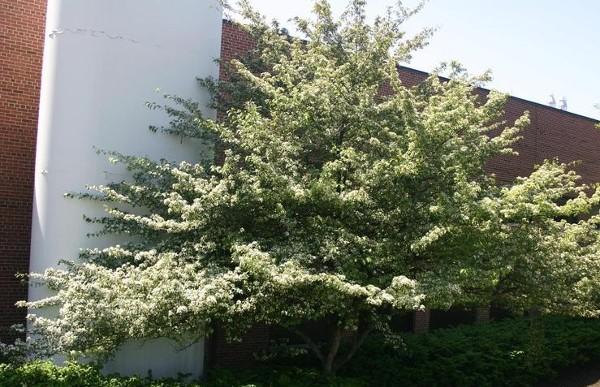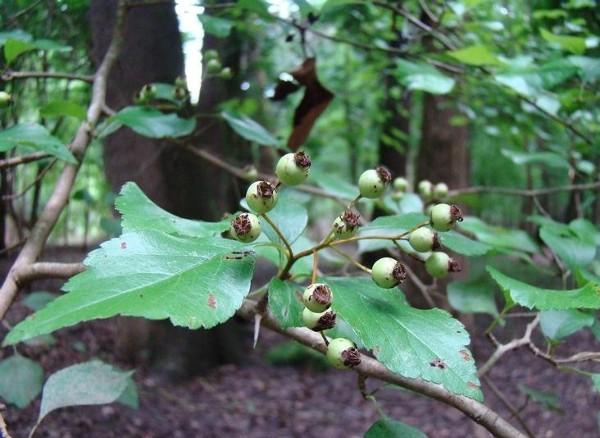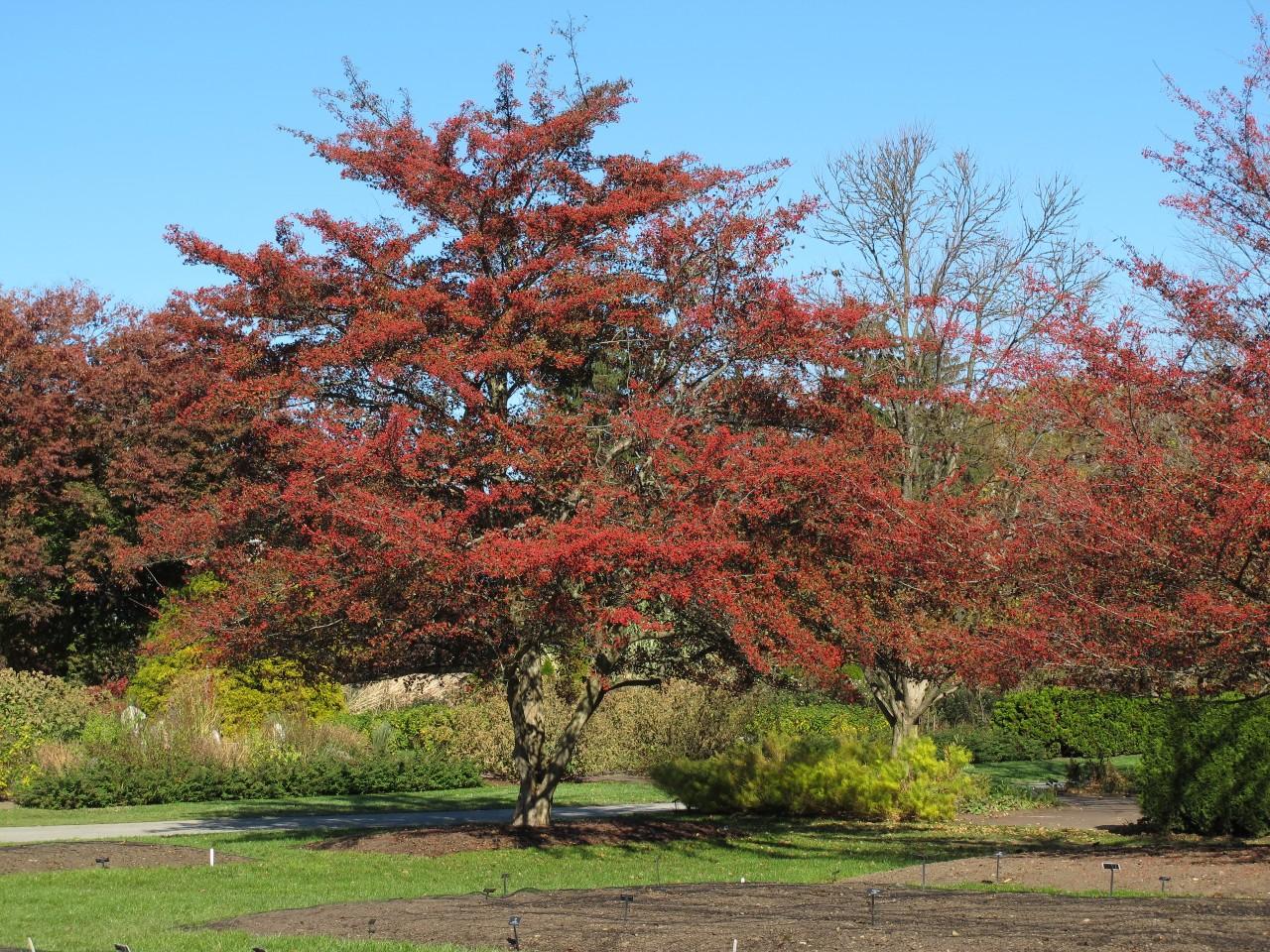About green hawthorn
Crataegus viridis
Deciduous tree
Maryland Distribution: Coastal Plain
Height: 20’ to 35’ feet
Flowers: Clusters of showy white fragrant flowers in April
Fall color: scarlet-red and/or reddish-purple
Sun/Shade: The native species grows in partial shade to full shade; ‘Winter King’ cultivar grows in filtered shade to full sun
Soil: Clay-loam; pH 6.0-7.3
Garden Uses: Green hawthorn, also called southern thorn (Crataegus viridis), is native to the Southeastern United States, including the Maryland Coastal Plain. Its natural habitat includes lowland areas, valleys, and swamps, with medium-wet soil and full to partial shade.
The cultivated variety, Crataegus viridis ‘Winter King,’ is tolerant of full sun and is highly adaptable to a variety of soil conditions including those that are compacted and occasionally dry. It is tolerant of air pollution and makes a good choice for urban areas. ‘Winter King’ has small and inconspicuous thorns, unlike the straight species which can have thorns up to 1.5 inches long.

Green hawthorn offers multiple seasons of interest: showy white flowers in the spring, attractive scarlet-red foliage in autumn, and small fruits that turn orange-red in the fall and can persist on the tree into winter. The berries are edible but not considered of high quality for human consumption. On mature trees, patches of the outer gray bark shed off to reveal inner-orange bark.
Green hawthorn is an excellent choice for a flowering accent tree, street tree, or wildlife garden.

Wildlife: The flowers of green hawthorn provide nectar for bees and adult butterflies. A variety of songbirds and small mammals eat the fruits.
References
Dirr, Michael. 1998. Manual of Woody Landscape Plants: Their Identification, Ornamental Characteristics, Culture, Propagation and Uses, Fifth Edition.
Green Hawthorn, NC State, https://plants.ces.ncsu.edu/plants/crataegus-viridis/
Slattery, Britt E., et. al. 2005. Native Plants for Wildlife Habitat and Conservation Landscaping, U.S. Fish & Wildlife, Chesapeake Bay Field Office, Annapolis, MD. 82 pp.
Winter King Hawthorn, Mt. Cuba Center, https://mtcubacenter.org/plants/winter-king-green-hawthorn
